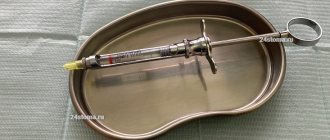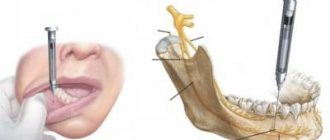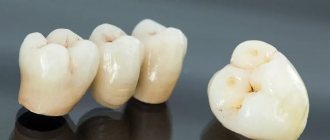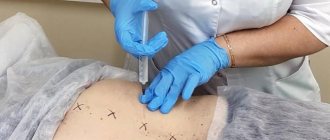Fear of pain always forces a person to look for options to avoid this sensation. Moreover, we are talking not only about situations where serious and long-term surgical intervention is required, but also during procedures such as laparoscopy, dental treatment, etc. In these cases, local anesthesia is often used. However, patients have many fears and prejudices in this regard. Anesthesiologist Sofya Galib told AiF.ru about what exactly such anesthesia is and why it is better than general anesthesia .
Article on the topic From a blow with a baton to curare poison. How the science of pain management developed
Variety of options
Many people are accustomed to calling “local anesthesia” only an injection at the dentist. However, this concept is much broader. In the dental office, infiltration anesthesia is used - because... The area of influence there is small. If it is necessary to “freeze” a large area of the body, regional anesthesia is used (spinal, epidural, and a separate nerve bundle), which helps relieve pain in a fairly large area of the body.
There are also so-called blockades - when, in case of chronic long-term pain, sensations in a specific area or nerve bundle are temporarily relieved. This option is used, for example, for neuralgia. This is, as a rule, a necessary measure, because with such problems, most of the time people are saved by non-steroidal anti-inflammatory drugs, which either work poorly or do not work at all and cause side effects (with long-term use) on the gastrointestinal tract. However, it is worth understanding that this option has a temporary effect. Yes, it will be a little longer in time - for several hours, or even for a day. But without proper treatment, the pain will return again.
In general, regional anesthesia is preferable to general anesthesia, because allows you to avoid the use of narcotic drugs, which means you can gently recover from anesthesia. In this case, the person will not hallucinate, and the risk of complications, such as the development of nausea, is also reduced.
Under anesthesia. Four important rules of general anesthesia for the patient Read more
Operations under local anesthesia
Thanks to the rapid development of anesthesiology and surgical technology, many operations under local anesthesia have become completely painless. As an example, we can take laser removal of skin tumors, as well as more delicate and complex manipulations - otoplasty, intimate plastic surgery and liposuction. The absence of the need for general anesthesia greatly simplifies the recovery period and makes rejuvenation and appearance modeling painless, accessible and as comfortable as possible.
You can learn more about anesthetic techniques and drugs used in cosmetology and plastic surgery during a consultation with a specialist at SOHO CLINIC.
Question of dose
One of the main problems in any type of anesthesia is the accurate calculation of the dose. During surgical interventions, formulas are used that take into account the patient’s height and weight. The work of an anesthesiologist in this case is akin to jewelry - after all, the doctor must assess the patient’s parameters, choose a drug, and understand what pain threshold the patient has. You also have to calculate at what level the injection will need to be made, which body segments will need to be anesthetized, etc. If we are talking about regional anesthesia, then the local anesthetic affects the sensory and motor activity of a particular part of the body, i.e. There is a certain risk that after anesthesia the arms and legs may become heavy, and the person may even stop feeling them. Depending on what drug is used, the effect can be long-lasting or, on the contrary, short-term.
Particular attention is paid to calculating the dosage during childbirth. After all, it is important here to help the woman endure contractions, and at the same time, not to extinguish them. If you overdo it, they stop very easily, which is a disastrous result. By the way, pain relief during childbirth is practiced extremely actively abroad, but at the same time they have a very well developed method of obstetrics using forceps. Therefore, they do not worry about contractions.
As for calculating the drug at the dentist, average values are used here. And there is the concept of a maximum permissible dose that cannot be exceeded. But in the case of dental practice, it is very difficult to cross this threshold, because excess product will simply begin to flow out of the puncture site, but will not get inside.
Article on the topic
Advice from an anesthesiologist: Which anesthesia is safer?
Contraindications to general anesthesia
Contraindications to anesthesia in dentistry when using general anesthesia:
- serious heart pathologies,
- bronchial asthma,
- endocrine system disorders,
- hormone-dependent diseases,
- pneumonia,
- upper respiratory tract catarrh,
- difficulty nasal breathing,
- acute liver diseases,
- acute infectious lesions,
- pregnancy,
- alcohol and drug intoxication,
- full stomach.
Any type of anesthesia is used with caution in case of chronic heart failure, intraventricular and atrioventricular heart block, renal failure, in childhood and old age, with inflammatory processes at the site of intervention and severe general condition.
French Dental Clinic has all the necessary licenses for the use of anesthesia in dental practice. Possessing knowledge gained in leading European educational institutions and extensive experience, FDC dentists are able to perform pain relief as safely as possible, assessing all contraindications to this procedure.
Unhealthy reaction
One of the main concerns of people who are about to undergo local anesthesia is whether they will develop an allergy? It’s worth remembering here that if a person has already had his teeth treated by a dentist, then most likely he will not experience any unwanted reactions. After all, all the drugs are standard and have been used for decades. Before each operation, the anesthesiologist carefully examines the patient, collects anamnesis, in a personal conversation clarifies whether there are any chronic diseases or a tendency to allergies, etc. Also, the person is prescribed antihistamines in advance to reduce the risk of developing a problem during the process and reduce the intensity of allergic manifestations if they do occur. Today, a test is often carried out - the drug is diluted 100 times, injected with a thin needle under the skin and the reaction is observed. It should be understood that no one is immune from the development of anaphylactic shock, even with such careful preparation, so in the operating room there is always, just in case, a set of tools that allow you to relieve this formidable complication and save a person’s life.
Swelling, shock... How to provide first aid for allergies in a child Read more
Local anesthetic drugs
As a rule, special local anesthetic preparations are used in cosmetology. For the application method, EMLA cream based on prilocaine and lidocaine, preparations with tetracaine, benzocaine are used. For infiltration and conduction anesthesia, ultracaine (a solution of lidocaine with adrenaline), trimecaine, and bupivacaine are used. All modern anesthetics are highly effective, well tolerated and do not lead to the development of allergic reactions in the absence of sensitization.
The patient must be calm
Local anesthesia is considered milder and safer than general anesthesia because it is non-narcotic. However, it is often necessary to combine anesthetics with sleeping pills. And this is due, first of all, to the increased anxiety of patients. For example, when performing a simple laparoscopy, the doctor needs a good view inside the abdominal cavity. The surgeon passes the camera through the incisions in the peritoneum - in order to see all the damage there, he needs the stomach to be, figuratively speaking, inflated like a balloon. In this case, combined anesthesia is used, when the person is relaxed and sleeps due to drugs alone, and is relieved of pain by spinal or epidural anesthesia.
Often, for example, when performing spinal anesthesia, people are afraid that they will become disabled and will not be able to walk - for some reason they are firmly convinced that the doctor will definitely move his hand or make a mistake, and then the patient will be immobilized. In fact, during the process of administering the anesthetic, the doctor does not even touch the spinal cord - the drug is injected into the cerebrospinal fluid.
Another fear of many is that the drug will not work. In this case, it is necessary to administer an additional sedative intravenously, and, if necessary, add doses of certain drugs. And there is also such a problem as internal conviction. If a person already feels pain, it happens that nothing can relieve it, his psycho-emotional mood is so strong.
In general, regional anesthesia today is the most preferred option for pain relief, which is safer for humans. But it is worth remembering that before the intervention, the anesthesiologist is obliged to talk about all the available types of anesthesia and the procedure for their implementation, and the patient is required to decide what to choose.
Types of local anesthesia
If you are preparing for rejuvenation using hardware or injection cosmetology methods, you do not need to know about all the intricacies of an anesthesiologist’s work.
A general understanding of the types and principles of local anesthesia is enough to get rid of unnecessary doubts and unnecessary worries. Today in aesthetic medicine the following types of local anesthesia are used:
- application, also known as surface;
- infiltration, or regional;
- conduction, or blockade.
1. During application anesthesia, the transmission of nerve impulses is blocked at the level of nerve endings. An anesthetic solution (gel, ointment, cream or spray) is applied to the surface of the mucous membrane or skin, which causes a temporary blocking of nerve endings located at a depth of 3-5 mm. This technique is actively used in mesotherapy, laser rejuvenation, superficial peelings, Botox or Dysport injections, and removal of small tumors (papillomas, condylomas).
2. Infiltration local anesthesia requires intradermal injection of an anesthetic solution. Using a very thin needle, the doctor injects an anesthetic into the dermis and blocks the nerve endings at a considerable depth. The method is used for thread lifting and contouring with dermal fillers.
After local anesthesia using the regional method, slight swelling of the tissues (temporary) is observed due to infiltration of the dermis by the anesthetic. For this reason, the application method is more often used in cosmetology, which provides reliable pain relief without any consequences. The advantage of regional anesthesia is a deep and rapid effect - blockade of impulses is achieved in just 3-5 minutes.
3. Conduction anesthesia involves interrupting impulse transmission at the level of the spinal cord, nerve trunk or plexus. By injecting the drug into a special point, it is possible to completely numb a large area. When manipulating the face, a blockade of the branches of the trigeminal nerve is used. Spinal and epidural blockade at the level of the lumbar spine is used in plastic surgery before non-surgical liposuction or intimate plastic surgery.
It is important to understand that if local anesthesia is performed, it will not hurt. You may feel warmth, pressure or tingling, but there is no pain. In some cases, combined methods of local anesthesia (for example, mesoanesthesia) are used, which may cause minor pain, but the doctor will definitely warn you about this.
Anesthesia and anesthesia
We consider it absolutely necessary to inform patients as much as possible about everything that awaits them during and after surgery.
It is very important that the patient is able to optimally prepare for the rather complex ordeal of surgery. It’s not for nothing that they say: forewarned is forearmed. Many years of experience show that only patients who are well informed in advance undergo surgery easily, recover quickly and return to active life. Will I be in pain during the operation?
Such a question for modern medicine sounds somewhat naive, because back in the second half of the 19th century, pain during surgery was over. Since then, anesthesiology (a branch of medical science that studies various types of anesthesia and anesthesia) has come a tremendous way in its development and today has everything necessary to ensure that any, even the most complex and extensive operation is painless, safe and comfortable for the patient. However, even the most knowledgeable patient sometimes worries and asks a similar question: will it hurt me during and immediately after the operation, when the anesthesia wears off? The answer in this case may sound like this: if the anesthesiologist (a specialist in pain relief and monitoring the patient’s condition during surgery and in the immediate postoperative period) is a high-class specialist and performs his work professionally, pain during the operation and after the end of the surgical anesthesia is not will.
What types of pain relief exist in modern medicine?
What types of anesthesia are used for which operations? Pain relief or anesthesia can be general or local. For minor operations (in urology these are many operations on the penis and scrotal organs, in gynecology - minor interventions on the labia, vagina, external urethral opening, etc.), local anesthesia . It consists of introducing a special substance, a local anesthetic (lidocaine, xylocaine, marcaine, etc.), using a syringe into the area of the operation being performed or into the area of the peripheral nerves that control the pain sensitivity of the operation area, which temporarily turns off the pain sensitivity. Local anesthesia can be infiltration (injection of an anesthetic directly into the area of incision and surgical manipulations), conduction (injection of an anesthetic into the area of large nerves that provide pain sensitivity in the operation area, but are themselves located outside this zone) and combined. During an operation under local anesthesia, the patient is conscious, he sees and hears everything that happens in the operating room, he can also feel all the touches of the surgeons (not pain), and sometimes experience minor pain. General anesthesia or anesthesia (the word anesthesia means only general anesthesia with the switching off of consciousness and pain sensitivity at the level of the brain, the colloquial expression “general anesthesia” is meaningless) consists of temporarily switching off the central zones of pain sensitivity and the transmission of pain impulses in the brain or spinal cord . Anesthesia can be intravenous or intubation. During intravenous anesthesia, a drug is injected into the patient's vein, which causes the pain sensitivity centers of the brain to be turned off and at the same time turns off the patient's consciousness, maintaining, as a rule, spontaneous breathing. Intravenous anesthesia is used for minor and medium-sized operations when local anesthesia cannot provide adequate pain relief. This type of anesthesia is also used at the request of the patient, when he would not like to be conscious during the operation, see, hear and feel everything that happens in the operating room. Intubation anesthesia consists of a preliminary temporary shutdown at the level of the brain of the patient’s central pain sensitivity and consciousness, temporary paralysis of the muscles, followed by intubation (insertion of a breathing tube into the trachea) and artificial ventilation of the lungs (artificial respiration) using special breathing equipment for the entire duration of the operation. This type of anesthesia is used for extensive operations on the abdominal and thoracic cavities, pelvic organs and retroperitoneal space (abdominal surgery). Such operations require that the patient's muscles are relaxed and involuntary or voluntary movements do not interfere with the surgeon and are completely excluded. Intubation anesthesia can also be used in cases where intravenous anesthesia or local anesthesia may be insufficient to provide adequate pain relief and control of the patient’s condition during medium-sized operations, as well as for medical reasons related to the presence of certain diseases of the person being operated on. A special place among the methods of general anesthesia is occupied by spinal (epidural) anesthesia (Fig. 1), which consists of introducing local anesthetics of varying durations of action (lidocaine, xylocaine, marcaine, etc.) into the spinal canal, which leads to temporary shutdown of pain and tactile sensitivity , as well as motor function below the injection site.
Rice. 1 Performing spinal anesthesia by an anesthesiologist.
Spinal anesthesia is usually supplemented with so-called intravenous sedation (medication sleep) and the patient sleeps during the operation.
This type of anesthesia is used for various operations on the pelvic organs and external genitalia. What are the characteristics of the patient’s recovery from various types of anesthesia and the immediate postoperative period?
What needs to be done to speed up the patient’s recovery and recovery after surgery? Very often, patients wonder what will happen to them and how they will feel when the anesthesia wears off? Of course, this depends on the type of anesthesia used, and on the type and extent of the operation, as well as on the general condition and individual characteristics of the patient’s pain sensitivity. After the cessation of local anesthesia , after minor operations, patients, as a rule, experience slight pain in the area of the surgical wound (the site of the surgical injury cannot help but hurt). To relieve these pains, it is usually enough to take a non-narcotic analgesic (painkiller) such as analgin, ibuprofen or diclofenac (Voltaren). If the effect of these drugs is not sufficient, more powerful non-narcotic analgesics are used - ketorol, tramadol, ketonal, etc. Typically, postoperative pain during minor and medium-sized operations lasts no more than 1 to 2 days. If they last longer, this should be brought to the attention of your doctor. After intravenous and intubation anesthesia , patients feel as if they were after a good and deep sleep, sometimes they remember bizarre dreams, occasionally experience a headache, note nausea, and in isolated cases vomiting. After intubation anesthesia, there is a soreness and discomfort in the throat, which is associated with the presence of a breathing tube there during the operation. Some medications used for these types of anesthesia can cause breathing problems. In this regard, patients are in the first hours after surgery under close supervision of medical personnel of the anesthesiological service (anesthesiologist, nurse anesthetist). Only when there is absolute confidence that there can be no breathing problems, the patient is transferred to a regular ward. After medium-sized, and especially after large abdominal operations, the patient may experience fairly intense pain for several days. In these cases, postoperative pain relief becomes a critical part of the patient's treatment in the first days after surgery. There are several postoperative pain relief regimens that are selected strictly individually and guarantee the patient’s comfortable condition in the first days after surgery. In the early postoperative period after major abdominal operations, in order to speed up the patient’s recovery and recovery, three main problems . The first problem is pulmonary rehabilitation. It is often difficult for the patient to breathe deeply and move in bed. This can lead to pulmonary congestion and even post-operative pneumonia (pneumonia). To avoid this, the patient is placed with the head end slightly elevated, he is recommended to move in bed and regularly (every 1 - 2 hours) do breathing exercises (inhaling with resistance using a special spirometer or exhaling into a jar of water). The second common postoperative problem associated with prolonged lying down and lack of muscle activity is stagnation of blood in the veins of the legs , the formation of blood clots, which can travel through the veins to the heart and further into the pulmonary artery (thromboembolism) and cause sudden death. To prevent this formidable complication, the patient is given drugs that reduce blood clotting, and constant compression (squeezing) of the legs is also applied using an elastic bandage or, which is much better, simulating natural muscle activity, variable compression using a cuff of a special device. And finally, the third most important postoperative problem is rehabilitation of the digestive system .
It is known that after major operations, especially on the abdominal and pelvic organs, there is a temporary decrease in intestinal peristalsis (contractility), which, as a rule, recovers on its own 2–3 days after surgery. To speed up this process, patients are advised to gradually return to their normal diet. On the first day after the operation, they are only allowed to drink water, on the second day they are allowed to consume liquid nutritious foods (jelly, jellies, broths), from the third day they supplement the diet with pureed boiled vegetables and minced lean meat (young beef). The solution to all three main problems of the postoperative period is facilitated by early activation of the patient. We try to ensure that by the end of the first day after extensive abdominal operations, the patient sits in bed or in a chair, and by the end of the second day he gets up, washes himself and begins to walk around the ward. On the 3rd - 4th day after major abdominal operations, the vast majority of our patients begin to walk along the corridor of the department and prepare for discharge from the hospital. Why is it important to be discharged from the hospital as early as possible?
In the hospitals that we inherited from the Soviet healthcare system, even today postoperative patient care is often organized in such a way that patients remain in the hospital after major operations for one to several weeks. Many people mistakenly believe that the longer a patient remains in the hospital after surgery, the more “fully” he will recover. Studies conducted in leading Western countries have shown that everything is happening quite the opposite. It has been proven that the longer the patient's postoperative stay in the hospital continues, the more often infectious complications (wound suppuration) caused by the so-called hospital infection occur. It is worth noting that the state of affairs with hospital-acquired infections in Russian hospitals clearly leaves much to be desired, so there is no point in staying in them. Another important argument in favor of early discharge from the hospital lies in the field of human psychology and is expressed by the proverb - houses and walls help. In familiar and comfortable home conditions, recovery occurs much faster. A necessary condition for early discharge from the hospital is the presence of close people who could provide the patient with the minimum necessary care at home. If necessary, medical personnel can come to the home of postoperative patients at the Andros Clinic.
It is important to know that you should reduce or abstain from smoking in the postoperative period. This will significantly speed up the healing of the postoperative wound.
DEAR PATIENTS! REMEMBER THAT QUALIFIED ANESTHETIC CARE AND COMPLETE POST-OPERATIVE REHABILITATION ARE ESSENTIAL COMPONENTS OF SURGICAL TREATMENT. ANDROS CLINIC HAS ON ITS STAFF A HIGHLY QUALIFIED ANESTHESIOLOGIST CAPABLE OF CONDUCTING ANESTHETICS OF ANY COMPLEXITY AND PROVIDING HIGHLY PROFESSIONAL POSTOPERATIVE CARE AND REHABILITATION EVEN IN THE MOST COMPLEX CASES. THE CLINIC USES THE MOST PROGRESSIVE METHODS OF POSTOPERATIVE PATIENT MANAGEMENT, EARLY ACTIVATION OF PATIENTS, AND QUICK DISCHARGE FROM THE HOSPITAL. AS A RESULT, PATIENTS EVEN AFTER THE MOST COMPLEX OPERATIONS (RADICAL PROSTATECTOMY FOR PROSTATE CANCER) ARE DISCHARGED FROM THE HOSPITAL FOR 4 - 5 DAYS AND 3 - 4 WEEKS AFTER THE OPERATION RETURN TO ACTIVE WORK TE.











